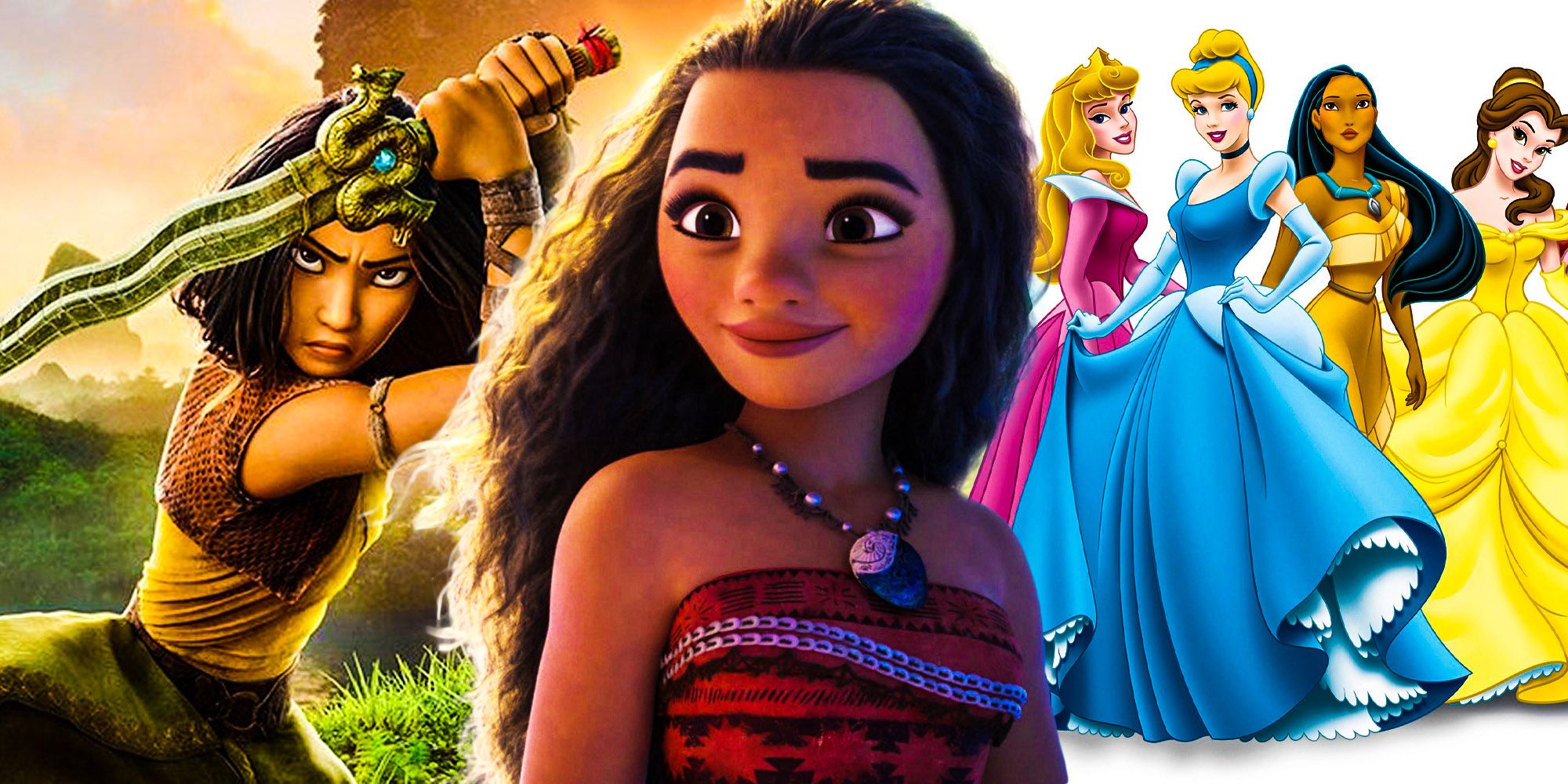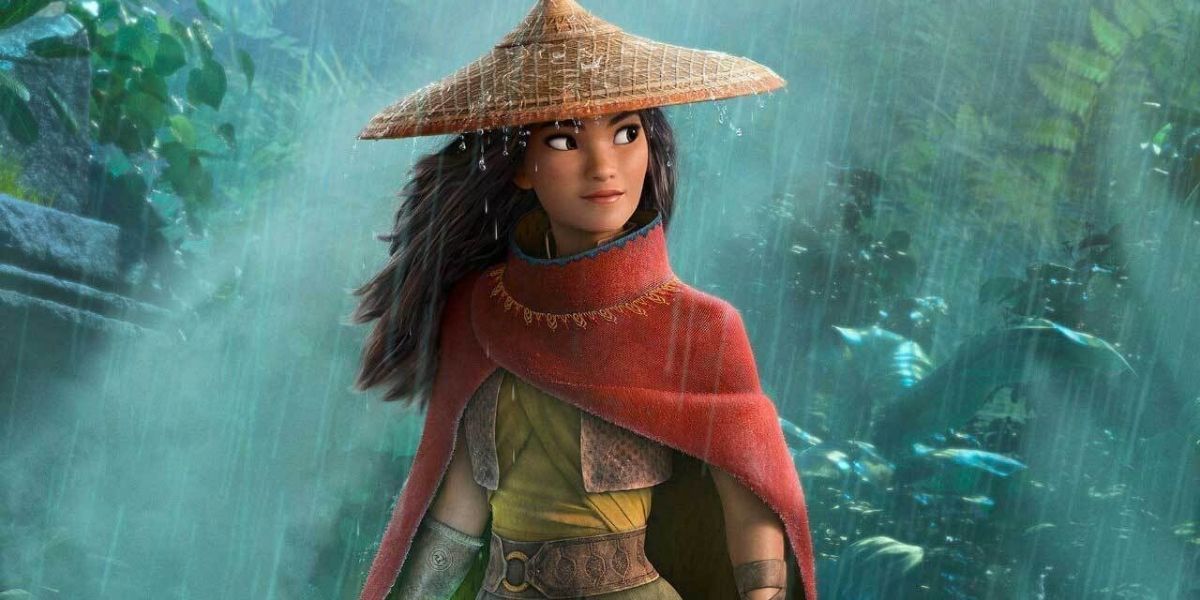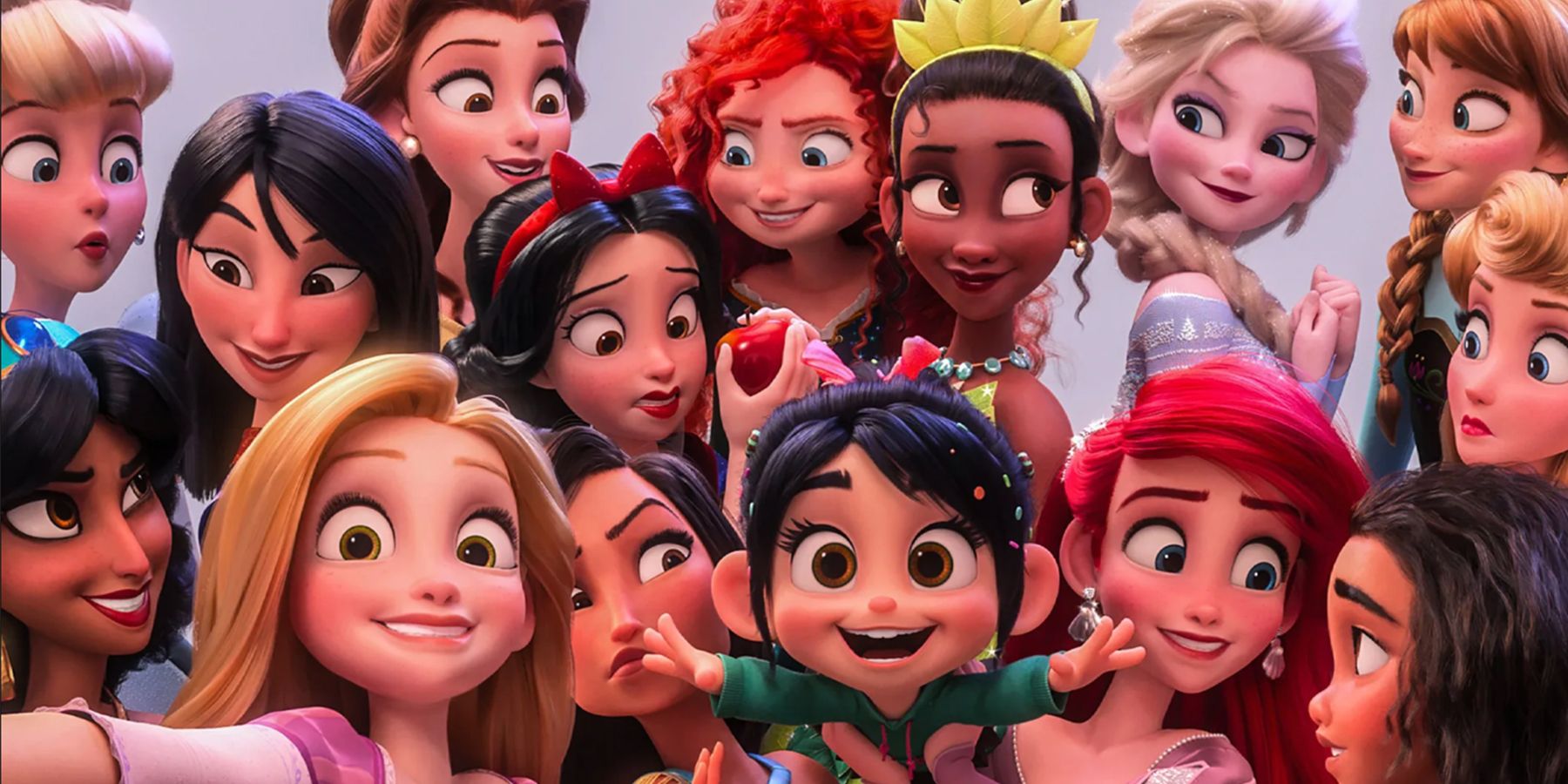The One Thing That Separates Classic Disney Princess Movies From Modern Princesses
The One Thing That Separates Classic Disney Princess Movies From Modern Princesses
While classic Disney princesses were based on fairy tales, recent princesses have different origins. Here’s what sets the new protagonists apart.
You Are Reading :[thien_display_title]

From Snow White to Raya, Disney princesses are well-known icons with beloved narratives – but the origins of these female protagonists have shifted in recent years. It’s common for these movies to take inspiration from preexisting stories, but the kinds of stories that Disney utilized for some of its latest princesses are a little more complex compared to those of the classic ones. Though older generations of Disney fans grew up watching the likes of Aurora and Belle, younger fans are turning to Merida and Moana to captivate their imaginations, and there are some key differences.
Disney’s release of its first princess and first animated feature film, Snow White and the Seven Dwarfs (1937), was met with positive critical acclaim, and it paved the way for a whole princess franchise. Currently, the official lineup of princesses includes Snow White, Cinderella, Aurora, Ariel, Belle, Jasmine, Pocahontas, Mulan, Tiana, Rapunzel, Merida, and Moana. Although Frozen (2013) introduced two royal daughters, Elsa and Anna aren’t considered Disney princesses. Recently, Raya and the Last Dragon premiered in March 2021 with its titular heroine loosely considered as Disney’s first-ever Southeast Asian princess. Though no official announcement has been made, it is expected to happen.
On the surface, there are several qualities that make modern Disney princesses distinct from their 20th-century counterparts. Animation has improved since the 1930s, and the advancements in visual features and movements make the newer princesses much more dynamic. With heroines like Merida or Elsa, the trope of the damsel-in-distress who is ultimately on a quest for true love has been abandoned, and an independent protagonist who doesn’t need a love interest has taken that place. In addition, a more diverse range of princesses has dominated the big screen in recent years, giving fans from various backgrounds and ethnicities the opportunity to identify with their favorite characters. But the biggest trend that sets modern Disney princesses apart lies in the actual origins of their stories.

While earlier Disney princess films were based on fairy tales, modern ones are now centered around myth, legend, and folklore. Snow White, for example, was based on the 1812 fairy tale written by the Brothers Grimm, whereas Hans Christian Anderson’s famous literary tale was the inspiration for Ariel and The Little Mermaid (1989). Most of the 20th-century princesses came from fairy tale characters, but that’s not the case for the latest princesses. With Merida, Brave (2012) features elements of Scottish/English folklore, such as the will-o’-the-wisp that she encounters in the woods. Moana (2016) draws from Polynesian myth for its plot elements and characters, like the legendary folk hero Maui. According to Disney, long-standing aspects of Southeast Asian culture like martial arts and dragons were the inspiration for the team behind Raya and the Last Dragon.
Because modern Disney princess movies rely on different elements and transcend simple narratives, the stories are much more epic in nature and include a lot more action. Cinderella checks all the boxes of a beloved princess, and although she deals with her mean stepmother, she experiences very little physical danger. Her film doesn’t feature as much action compared to that of Moana, who sets sail in search of a demigod and battles tiny pirates and a volcanic demon. Basing a film on myth and legend cultivates an enriching and adventurous plot, as is the case with Merida and Raya also.
These newer origins can impact the perception of the different Disney princess films. Fairy tales are stories that are generally more straightforward and are intended to be enjoyed by children. They could be historical, but the roots aren’t as deep as Polynesian origin or Scottish folklore. Myths are often rooted in religion or other belief systems and have a lasting and significant cultural impact. While a film like Raya and the Last Dragon is intended for young viewers, they will likely miss out on the deeper meanings and references that come with the myth-based narrative. And even though film criteria and rating systems have changed since Disney’s first princess movie premiered, it’s still worth pointing out that Brave, Moana, Raya and the Last Dragon, and even Frozen have all earned a PG rating. By contrast, most classic princess movies – like Sleeping Beauty, Aladdin, Pocahontas, and Beauty and the Beast, to name a few – were rated G. The myth-based origins create more mature content, though it’s still enjoyable at the surface for children.

While myth and legend make for exciting stories, they come with the risk of criticism for not being executed well. This doesn’t mean that the classic princesses are immune to criticism, but the stakes are higher when it comes to deeper traditions being represented. In 2013, a controversy emerged surrounding the “crowning” of Merida as an official Disney princess with a new image of the empowering heroine with a thinner shape and smoother hair, similar to the design of earlier princesses. After an online petition against the alterations gained over 200,000 signatures, Disney removed that image of Merida from its website. Raya and the Last Dragon features an impressive cast that includes Kelly Marie Tran, but the film has faced criticism for not including voice cast members of actual Southeast Asian descent. The fact that this kind of oversight happens with movies that are meant to highlight diverse cultures or long-standing traditions is disappointing, but it also underscores the impact that they do have on audiences.
As the Disney princess canon continues to expand, the differences between the classic and modern princesses will inevitably become more apparent. Walt Disney’s nephew, the late Roy. E Disney, was initially opposed when presented with the new idea of the princess franchise, stating that the company had always “avoided mingling characters from its classic fairy tales in other narratives, worrying that it would weaken the individual mythologies” (via The New York Times). Yet, time has shown that the origins of each Disney princess are still as unique and individual as ever.
Link Source : https://screenrant.com/classic-disney-princesses-vs-modern-ones-fairy-tale-myth/
Movies -Why Umbrella Academy Season 3 Already Has A Story Problem
The Vampire Diaries Why Stefan Killed Enzo In Season 8
The Strangers 2 Director Reveals Classic Horror Influences
Why High School Musical 4 Never Happened
Westworld The Biggest Questions & Mysteries Season 4 Needs To Answer
Why The Walking Dead Killed Tyreese In Season 5
The Reason Why Game of Thrones Wont Be Back Until 2019
